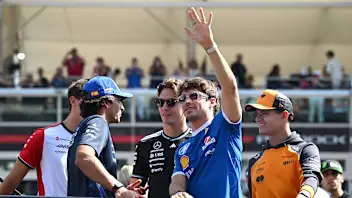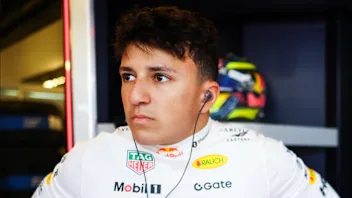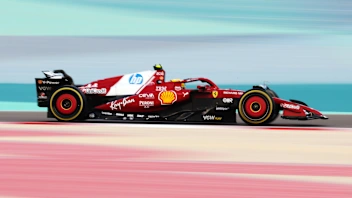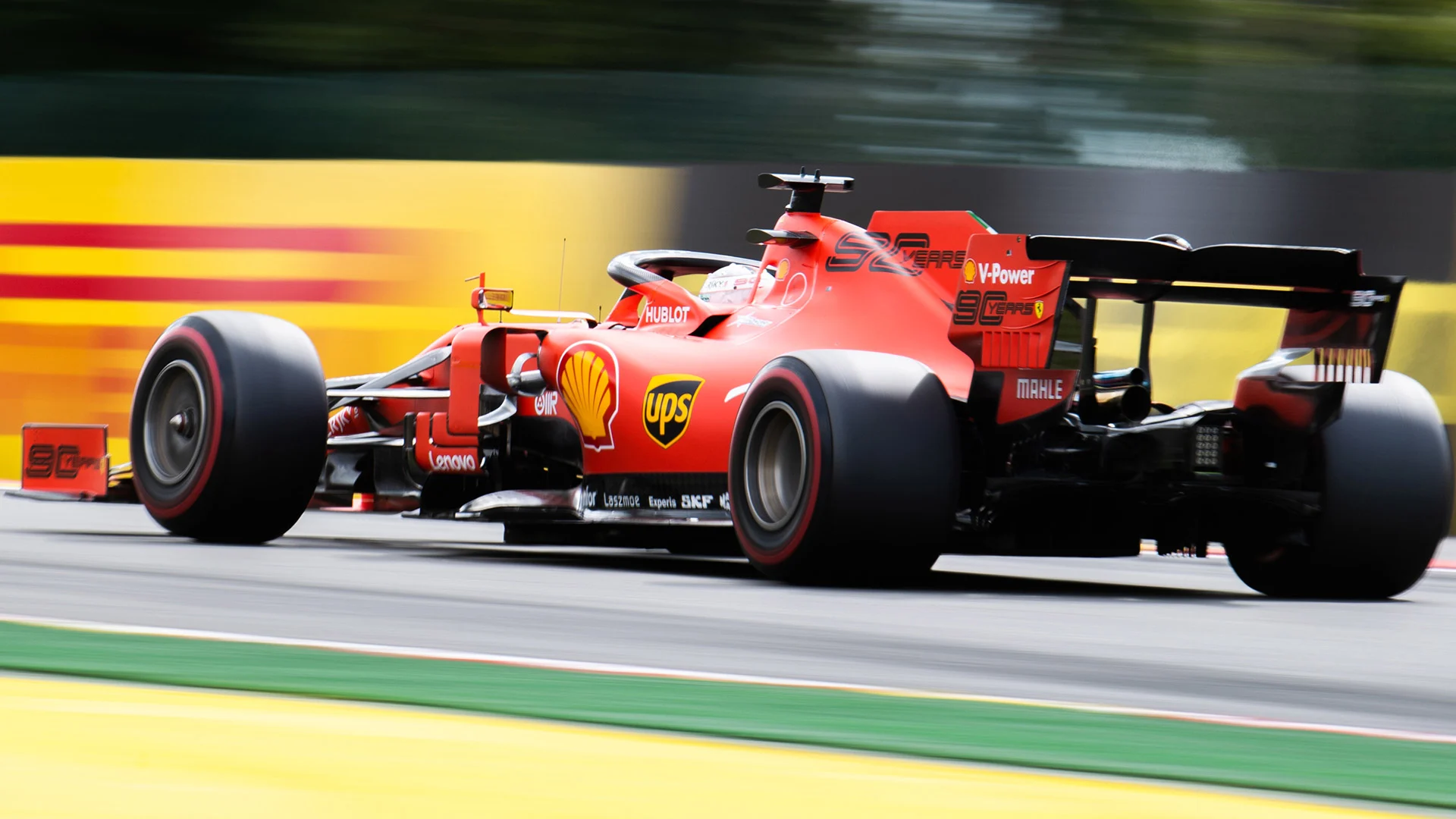Spa-Francorchamps demands a high-speed set-up, but Monza this coming weekend sees F1 cars in their lowest-drag form of the season. Tiny rear wings make the cars very skittish as they develop only around 60% of the downforce of the bigger wings used at conventional tracks.
Reducing wing level will always reduce drag on any track (as well as dull the effectiveness of the DRS), but it also reduces downforce. The two qualities are, of course, intimately related in that creating downforce with the wing brings an associated cost in drag. The wing level giving the optimum point of compromise between minimising drag but maximising downforce depends primarily upon the layout of the track.
With such uniquely elongated straights and only a small smattering of corners, the lap time payback for a reduction in drag at Monza is massive, while that for an increase in downforce is relatively small. Hence the optimum rear wing area is relatively tiny – such that it requires a completely different geometry and endplate design. Accordingly, less front downforce is needed to balance the car and that has implications upon the front wing design. Hence Monza is the only track where the aero packages of the cars are designed specifically for one circuit.
For the aero departments, creating the Monza package begins in simulation. The point at which either adding more wing or reducing it worsens the lap time defines the efficiency point for any given circuit. That point will be at its highest at Monaco and lowest for Monza. Once that exact point has been defined for a given car at Monza, the next task for the aerodynamicists is to ensure the Monza car retains the same traits as the standard car in terms of balance, its response in yaw and the consistency of balance through a corner.
READ MORE: Why Ferrari’s SF90 is tailor-made for Spa and Monza
The reduction in rear downforce is not only directly from the wing. The underside of the wing and the way it sweeps upwards draws upon the airflow that is exiting the diffuser. With less wing underside area, there is less of a pull on that underfloor airflow, which does not therefore get accelerated as hard. So for any given car speed, the underfloor airflow speed will be lower at Monza than elsewhere. The lower the air speed, the less the downforce.

This has to be built into the calculations of how to balance the car. It is particularly important to keep the diffuser working and prevent it from stalling, particularly at the high rear ride heights it will see under braking and into slow corners. If the diffuser should suddenly stall beyond a certain ride height threshold because of the reduction in aid from the rear wing, the driver will experience a car that is even more unstable under braking than the typical Monza car. Indeed, a rookie driver given a Monza package to try for the first time will usually assume there is a problem with the car, so much less stable will it be compared to the conventional car. It is vital not to worsen that instability further and so the diffuser’s performance is crucial.
READ MORE: Why is the 'boomerang' so fashionable in 2019?
Wing levels are not the only visual giveaway of the Monza package. Aside from the absence of any T-wings or additional fins atop the body, the cars will also tend to be run with a lower angle of rake. Having the car run nose-down increases the expansion angle of the underfloor and increases downforce, but it also increases drag. The optimum trade-off point comes at a lower rake angle at Monza than anywhere else.
Combining the effects of wing area, underfloor, front wing and rake to achieve the most efficient combination possible is a long and intricate process and typically the Monza package will be developed soon after the car design has been finalised. The range of downforce/drag trade-off needed over the 21 circuits of the season is built into the design of the car, but Monza gets its own special package once that global requirement has been met.
It can therefore happen that one design is more responsive than another to any reduction in downforce/drag in a way that is particularly useful at Monza. The indications from sectors 1 and 3 at Spa suggest that the Ferrari’s usual drag advantage was actually enhanced as everyone reduced their downforce from more conventional tracks. This is surely a great omen for the Scuderia as they head to their home race on this very special track.
Next Up
Related Articles
 All the 2026 F1 driver numbers confirmed in full
All the 2026 F1 driver numbers confirmed in full.webp) ExclusiveLowdon on why Zhou ‘ticked all the boxes’ for Cadillac
ExclusiveLowdon on why Zhou ‘ticked all the boxes’ for Cadillac.webp) Zhou Guanyu joins Cadillac as reserve driver for 2026
Zhou Guanyu joins Cadillac as reserve driver for 2026.webp) ExclusiveZhou on why he has ‘high trust’ in Cadillac project
ExclusiveZhou on why he has ‘high trust’ in Cadillac project Mekies sets out expectations for Hadjar in 2026
Mekies sets out expectations for Hadjar in 2026 All the key pre-season dates for F1 2026
All the key pre-season dates for F1 2026

